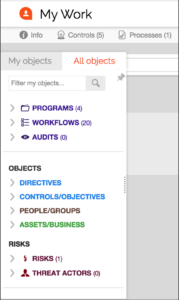5 Things to Know as You Prepare for a Compliance Audit
This post was originally published on SmartDataCollective.
For most cloud service providers, a compliance audit is, at best, a necessary evil — the root canal of the business world.
Like a root canal, it can be a painful process that you regret about halfway through, even if you know it’s good for you. But just as you can avoid root canals with proper dental hygiene and regular checkups, the pain of compliance audits can be avoided with proper preparation.
You need to see compliance audits as an integral part of your company culture that help maintain standards over each internal control, rather than as an annual nuisance that everyone wants to complete as quickly as possible. By asking the right questions before an audit and making sure your company’s priorities are in order, compliance audits can not only be relatively painless, but also actively beneficial to both your company and clients.
What Does Compliance Mean for a Cloud Service Provider?
Keeping track of multiple internal and external compliance requirements can be taxing for any company, and that’s especially true for cloud service providers (CSPs).
Unlike companies in other industries, CSPs are rarely able to align themselves with one industry vertical, meaning that it’s not always clear which regulations apply to which situations. CSPs can easily find themselves overwhelmed by a multitude of requirements and standards, including those from the PCI Security Standards Council, the Sarbanes-Oxley Act, HIPAA, FISMA, internal audits, privacy protection laws, and customer audits.
This is where the trouble begins. Faced with a host of governing bodies (each with its own set of regulations) and an uncertain path forward, many companies default to a reactive approach. They attack compliance on a departmental basis and wait for issues to come to them. Or on the other extreme, they push paper around trying to prove compliance in every possible area and fail to take into account their own unique risks.
At the extremes, companies end up focusing on the wrong priorities, sending compliance auditors down rabbit holes and making themselves vulnerable. CSPs can’t approach the compliance audit process with a check-the-box mentality. This will only lead to false positives. Rather, they need to evaluate their unique risks and figure out how compliance can mitigate those risks.
In a practical sense, this means that CSPs need to adopt a unified compliance policy that focuses on long-term solutions, not short-term Band-Aids. If they have sound assurance and policy practices already in place, they should be able to tackle most compliance issues across different service lines and industry verticals. And by working to mitigate risk first and foremost, a company can align its priorities and figure out what regulations it needs to adhere to.
Key Questions to Ask Before a Compliance Audit
Once you have the right structure in place, your compliance initiative will become a regular business process. With a better understanding of your own goals, you can arm yourself with the right questions well before the compliance auditor comes. This way, you’ll get the most out of the process. Here are five key questions you need to ask yourself as you plan for your audit:
1. What is the scope of the audit? Because there are so many paths an audit can go down, it’s important to be aware of scope creep. Make sure you understand things such as your key systems and range of IP addresses ahead of time so that you aren’t casting your net too wide. And avoid getting caught up in industry jargon by focusing on how the audit will impact your end users. As a starting point, consider mapping out a data flow diagram for key business processes.
2. Have the findings in previous audits been corrected? Why or why not? If you’re going through audits and finding the same compliance issues year after year, then the audit isn’t serving its purpose. The sooner you find out what is stopping you from correcting these issues, the easier subsequent audits will be. And if you undergo an audit and find zero issues, then you’re probably spending too many resources on compliance without a balanced focus.
3. How will you handle the results of the audit? Think about how you’ll assign responsibility for prioritizing and resolving issues that come up during the audit. And make sure you have a plan in place for addressing problems identified in the last audit report and incorporating them into a continuous process of monitoring and improvement. The results of your audit should reverberate throughout the company for a long time to come.
4. Is there proper management in place to make sure the audit moves efficiently? Although the results might reverberate long after the audit is over, the audit itself should not last forever. Clearly communicate your business needs in the context of your audit plan, and ensure your audit firm knows how to handle issues as they arise — whether those are issues identified during the audit or challenges with reaching milestones.
5. How will the audit affect the bottom line? If you’re spending money on an audit, make sure you’re making back that money in other ways. How will the audit help increase revenue or reduce costs? How will it manage your risks? An audit is more than just something to get out of the way; it’s an opportunity to improve the way your business runs.
Regulatory compliance — regardless of whether you agree with the regulations — should be seen as a key differentiator, not a drain on resources. With the right approach, an audit can be more than just a way to find out what you’re doing wrong; following audit procedures can illuminate the way forward.







